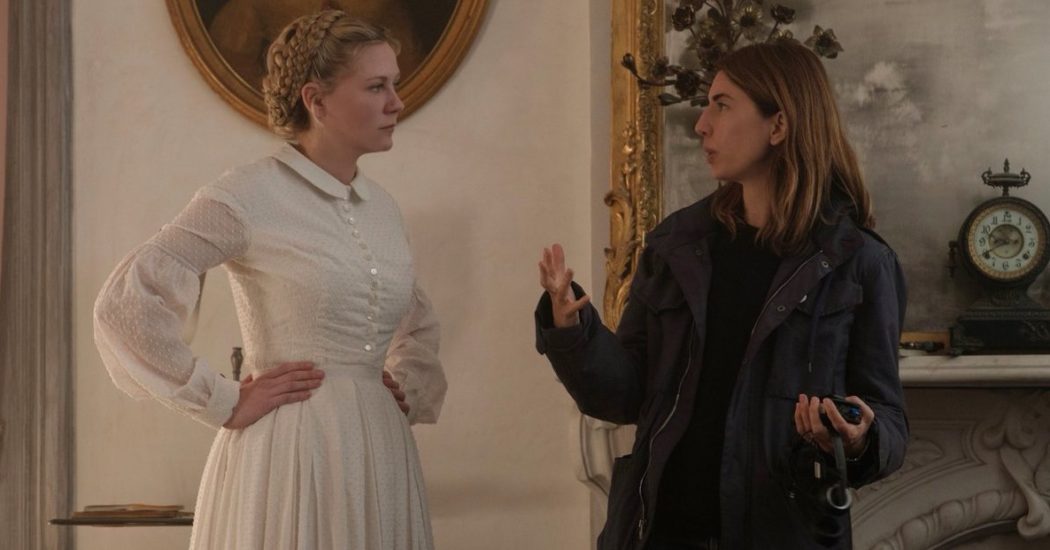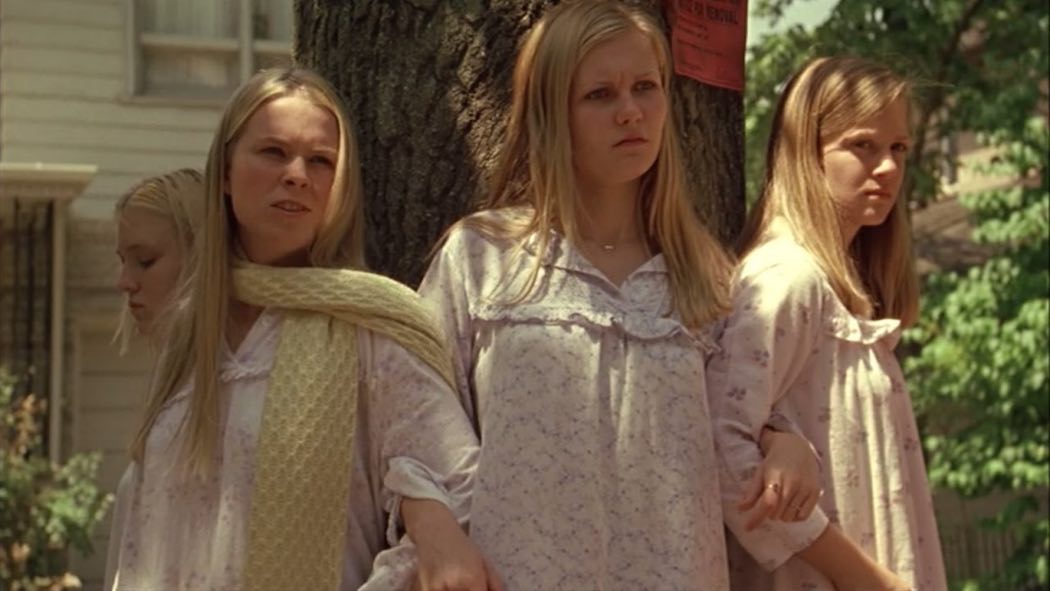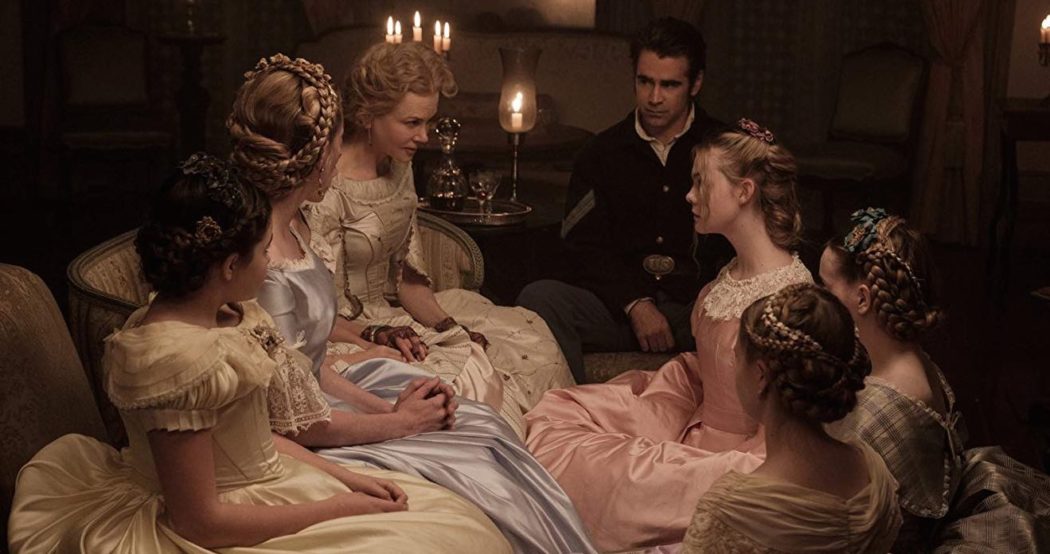
From Her First Film to Her Most Recent, the Filmmaking Style of Sofia Coppola Shines Through
If you want to see how unique and versatile a storyteller Sofia Coppola is without losing her signature style, watch The Virgin Suicides and The Beguiled.
How much style does a director retain throughout their career? Often we see directors fluidly changing their style with each film they make, leaving only specific artistic marks on their works. Sofia Coppola is no exception to this, and as a prominent female director in modern times, her work is often looked at for more personal stylistic touches.
Coppola is no stranger to filmmaking, having left a significant mark on the landscape of film since her directing debut in 1999 with The Virgin Suicides, and since then she has been a touchstone of women in film, with movies like Lost in Translation and most recently The Beguiled.
Is There a Familiar Sofia Coppola Style?
What mark of uniqueness does Coppola leave on her films? Is there anything uniquely stamping her works in a way that is noticeable thematically? I would say when comparing her first film, The Virgin Suicides to her most recent film The Beguiled it is quite clear that Coppola opts for stories that play with the theme of sexual mystique and desire.
The Virgin Suicides is an iconic film about young love, repression, and sexuality. The whole film is told as a recollection of men who grew up in the same neighborhood with each other. It’s tinted with a dreamy filter as the audience explores its sweet 1970’s high school setting, with the Lisbon sisters the object of much desire for the boys, as well as a mysterious presence due to the overbearing nature of the girls’ parents. But of course, as hinted at by the title, The Virgin Suicides is not a daydream exploration of teenage romance, but a carefully disguised nightmare, as we see the film end with all four girls committing suicide.

The Virgin Suicides explores female repression and the male sexual gaze incredibly.
The Beguiled is a startlingly similar movie when looked at critically. The film follows a girls school who take in a wounded Union soldier, John McBurney (Colin Farrell) during the Civil War and nurse him back to health all while making him the object of their sexual desire. McBurney, himself afraid to return to battle, welcomes the hospitality and the warmth and begins to make sexual advances towards the girls as well.
After an argument results in McBurney being pushed down stairs and breaking his leg, requiring an amputation, the girls resolve to kill him by poisoning his dinner. The most unique part of The Beguiled is that it seems to be structured entirely around the female gaze rather than the classic male gaze. The camera will linger on the body of McBurney’s soldier, showing him as he chops wood with his chest exposed, dripping sweat.
The idea of the male gaze has been such a prominent part of film since the beginning of filmmaking, and so looking at these two films through the lens of the male and female gaze is an interesting juxtaposition for one director, in this case, Sofia Coppola, to have in their catalogue.
Sofia Coppola Styles the Male and Female Gaze
In The Virgin Suicides we see a film that is narrated by the male gaze; the men telling stories of the girls they loved as young boys, and the girls are presented exactly as one would imagine: The innocent good girl with a dark, rebellious streak. Lux Lisbon (Kirsten Dunst) embodies this perfectly in The Virgin Suicides as the most promiscuous of the sisters after losing her virginity on prom night. We even see this male gaze in the soft filters used throughout the film that makes everything look like a dreamy romance fantasy.
In The Beguiled, we see this gaze mirrored from the female perspective. In this, we have John McBurney as the object of the female gaze. As the women of the school, played by Kirsten Dunst, Elle Fanning, and Nicole Kidman as headmistress, compete for his affection, we also see them lust after him, and the cinematography allows us to be a part of it as well. Turning this convention of filmmaking around is an incredible narrative tool used by Coppola in The Beguiled, letting the story feel more honest by allowing women to be shown as humans with sexual desires, as men are so often in film.

One other striking Sofia Coppola style element the two films share is the theme of men taking advantage of women, but with both meeting opposite ends.
Sofia Coppola and Varying Outcomes of Male Manipulation
In The Virgin Suicides, this comes in one scene, after prom when Lux Lisbon and Trip Fontaine, who have just been crowned king and queen, ditch everyone and have sex on the football field. Lux then falls asleep, and Trip leaves her there, alone. Lux awakens the next morning, alone, having lost her virginity, and has to take a taxi home and face her abusively overprotective parents. This drives the rest of the film as Lux loses everything, and is trapped in her house with her sisters, then rebelling, becoming overly promiscuous, eventually committing suicide with her sisters.
In The Beguiled we see a similar notion, where McBurney is caught in bed with a teenage student of the school and is then pushed down the stairs, resulting in his leg needing amputation. This loss feels almost like a metaphorical castration to McBurney, who flies into rage about how the women have taken everything from him now. The girls of the school then resolve to murder McBurney with poisonous mushrooms.
These two scenes begin the same, a man manipulating the women in his life into sexual encounters, but have opposite endings; one where the woman loses everything, the other the man. Coppola so perfectly captures the similarity of this emotional turmoil, while expertly highlighting the difference between the two all without ham-fisted exposition or overly narrated scenes. She just allows the drama to breathe and lay itself out.
When comparing a director’s first and most recent work to each other, it is not often that you see two films mirror each other so well. It is like watching an artist paint two paintings with the same colors, but using different brushes for each, resulting in two pieces similar in tone, but completely different in feeling. It is clear that the Sofia Coppola style of filmmaking has earned her a place as one of the most influential directors of our time, as well as one of the most pioneering female directors in history.

